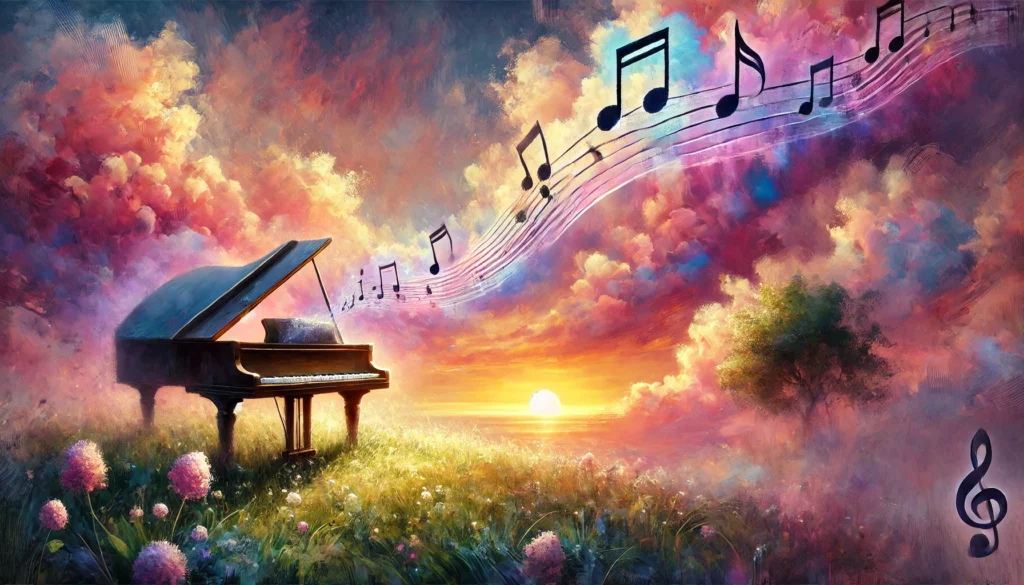Introduction
As a musician, songwriter and artist I am ever propelled by the creative force, and therefore eternally destined to seek and serve this Master. A Master that has commandeered my senses countless times, continually capturing my imagination, commanding my emotions, and compelling me to create. I am well aware that I am not alone in this and I am sure many of you have found yourselves captivated time and again by the Master appearing as the Muse in myriad form, be it an exquisite work of art, a moving piece of music, or a magical movie. Each time gifting you with an invitation to transcend the mundane and become elevated to a higher plane of attention and appreciation which is in essence, a worthy definition of LOve.
So often the simplicity of nature’s design takes our breath away and leaves us in awe. One recent snow-dusted morn I was greeted by the beautiful spectacle of a frozen spider web as I opened the backdoor. Its fragility and vulnerability steeped in snow-white flakes of geometric stars had me transfixed in an instant.
The simple things that nature or a person’s nature has taken time to create propel us all forward, frequently reminding us to take note of the beauty and potential within us and around us. We are inspired to speak, to listen, to think, feel, express, give and receive. In that constant exchange, it is easy to find purpose and consolidation. When we allow ourselves to explore we become incredibly powerful, drawing to us the opportunities to grasp new concepts, sensations, experiences, connections, and understandings. We continually grow beyond measure as that which we give our attention to informs our minds and memories, in turn creating our reality and flavouring our experience. We hold the collaborative key to exponentially expand our expression and what better medium to communicate this than through music. The language that transcends all barriers, speaks when words fail, communicates to the sensibility and sensitivity of all humans regardless of creed, colour, age, or origin.
It is the only instrument I know of that can sound bass, chords, harmonies, and melodies all at the same time. It identifies movements within that are often left untapped and obscured by the frantic kinetic motion and distraction of modernity.
My earliest memory of piano came in the form of morning assembly at school, this was the first time of experiencing the joy of piano with its sonic versatility and its ability to bring people together through sound. Of course, at such a young age, it was purely experiential, and only later that I began to understand why this was so special. It was here that I discovered that every day can be wonderful when it begins with a song. Thereafter, whenever the opportunity arose, I would lay my hands on any passing piano and unabashedly tinkle away to my hearts’ delight.
As someone that does not read music, my dalliance with the piano has been a wistful romance that has spanned this lifetime. It is only recently, thanks to the unprecedented pause caused by global events that have created a space from which surfaced a deep longing to embrace the tinkling of ivories once more and level up my playing ability.
This is no mean feat and if you are anything like me, the prospect of embarking on the comprehension of music theory and diving into the deep sea of scales and modes is somewhat daunting and tantamount to learning any new language however, it offers us the ability to communicate and convey our unique expression with a far more eloquent vocabulary than words. Whether we are giving a recital, covering our favourite tunes, or weaving a song form of our creation, the voicing of the piano is so diverse, it puts not only the foundation but also the bricks, mortar, and finishing’s of music at our fingertips. We can comfortably reside in the sound of the piano, bath in its harmonic glory, or use it to build our empires of sound. Deciding to learn to play may appear both exciting and scary but the prospect of this endeavour is on par with the greatest romance of any lifetime. There will likely be a honeymoon, and maybe even the odd break up along the way, especially if I can’t get the fingering down! But there is no doubt in my mind that the love and dedication required will be a life’s work and it will be a life very much worth living.
Why piano? What is it about this refined instrument that so vehemently draws us in?
I decided to go on an information spree and with a quick pit stop to Wiki, I discover the Piano was invented by Italian Bartolomeo Cristofori around the year 1700. Unlike other instruments the piano covers all 88 notes of the music scale with unparalleled range, achieving frequencies above and below any other instrument. These 88 notes span 7¼ octaves (from 2A to C5; 27.5 Hz to 4,186 Hz*). The human ear can hear sounds in the range from approximately 20 Hz to 20,000 Hz, but the upper limit of frequencies that the human brain can discriminate is at the very most around 4,000 Hz. Any more notes than this would be beyond a comfortable hearing range and appear as unpleasant noise. 52 white keys offer the notes of the C major scale (C, D, E, F, G, A and B) and 36 shorter black keys (F♯/G♭, G♯/A♭, A♯/B♭, C♯/D♭, and D♯/E♭), which are needed to play in all twelve keys.
Surprisingly, I discover that it is classified as a percussion instrument due to the nature of the strings being struck by hammers rather than plucked as with other string instruments.
From its conception and creation in the 1800s the piano quickly became a staple in the lives of people and by the 1900s had become a regular household feature providing the main source of entertainment, until 15th June 1920 when Guglielmo Marconi did the first-ever wireless radio broadcasting of a song recital by Dame Nellie Melba. Thereafter in 1922 the BBC was formed and swept away the entertainment attention of the masses.
The outstanding diversity of the piano is evident in its utilisation of both the bass and treble clef allowing the pianist to play multiple parts simultaneously which satisfies our desire to hear harmony in our music especially in Western culture. Perhaps that is it in a nutshell, piano delivers harmony and we simply can’t get enough of it. Its tonal and dynamic range just leaves us wanting more and match that with the large release of serotonin in our brain when we play the piano, much more so than just listening to it and it is no wonder we have embarked on this journey to turn the yearning to learning.
With many people spending more time at home than ever before, the rather handy technological advances that have brought digital pianos and synthesizers to the forefront of accessibility are deserving of our appreciation and accolade however, someday that baby grand piano I have my eye on shall be mine. Meanwhile, watch this 20min. video exploring under the piano hood with Christian Blüthner.


